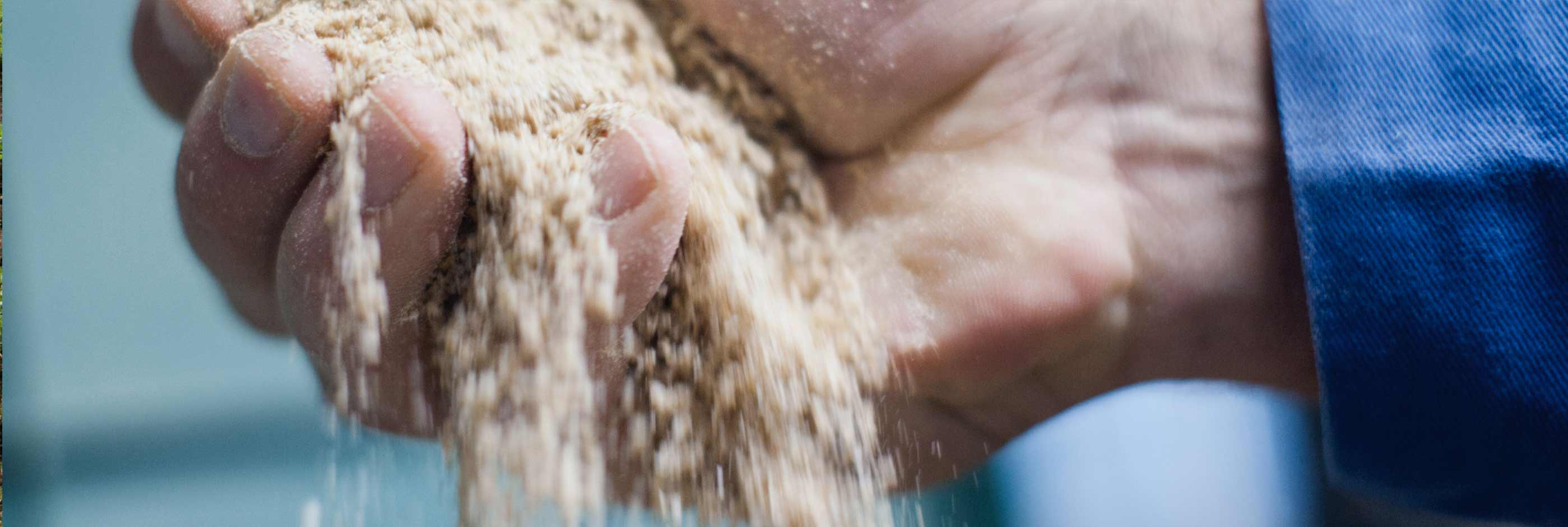Win the weaning!
By Nicolas Anglade, Category Manager Ruminants, Hamlet Protein
Healthy start and successful weaning transition are the fundamental pillars in rearing heifer breeding strategy.
For dairy farmers driven by performance and efficiency, raising heifers is essential for the herd renewal and its genetic improvement. The duration of this phase has a strong economic impact and must therefore be well managed. From the first days of life until weaning, a strategic moment is played out which will have consequences on the future dairy performance of the heifer.
Dairy farmers are driven to consider heifers as strategic investments
In general, heifers use to be the unloved in dairy farming, they take up space, require work and supervision and bring in nothing. Raising a heifer must be seen as a significant investment: economically speaking, it is an unproductive period which will be paid back with future milk production. This is the reason why we are hearing more and more about milk produced per day of life and no longer just per day of lactation. This new criterion is very impacted by the age at first calving.
Recent American studies statistically determine an ideal age at first calving at 22 months. Each month more at calving economically decreases the revenue by $500 over the cow's career on a 3 lactations basis.
The shorter the better! Gaining production days therefore allows not only to have income sooner but also to have cows that are statistically more productive and longer in the herd. And in this speed race, weaning and the parameters that characterize it such as the weight and ingestion capacity of the calf will have an impact on what happens next.The growth curve is the performance indicator and gives the key dates for the start of reproduction and strongly depends on the first 6 months which set the right pace.
Raising a dairy heifer is a long obstacle race. You might as well not miss the start!
In the first weeks of life, protein nutrition is essential for the rapid growth of young animals. Within the first 2 month, a calf is supposed to double its initial weight, a sine qua non condition for efficient weaning. Therefore, it needs constituents to build new cellular tissues (muscle, intestinal system) at a sustained rate.
Frequent digestive disturbances in the first weeks of life lead to low protein fixation and high nitrogen losses. In young ruminants, the problem is twofold since it is necessary to combine intestinal digestion with the first ruminal fermentations.
The rumen is in fact quickly activated and the consumption of dry feed becomes more important after the first month and will later determine weaning.
Rumen microbial fermentation and biomass production begin to nourish the pre-ruminant and prepare it for the most important part of its life as a full-fledged ruminant. Poor rumen preparation reduces consumption of dry feed and forage and consequently limits growth resources immediately after weaning.
Why is the weaning phase important for dairy heifers?
It is a big challenge of adaptation, the second in a row after birth, to the environment which opens the calf to its adult life: physiologic adaptation to rumination with the volumetric and functional development of the rumen and its microflora but also social adaptation to conspecifics and access to the feeder where puny calf accumulates handicaps. it is fundamental to give the young animal the best chance of successfully going through weaning by helping it acquire a functional and efficient rumen and an ability to ingest coarse feed.
Using clean vegetal protein can help on the winning weaning way!
The protein nutrition of young heifers is strategic, using vegetal protein specially developed for very young animals can help. This is where Hamlet Protein's know-how lies. With more than 30 years of experience in the production of enzymatically treated soy proteins, Hamlet Protein has been able to demonstrate both in research and field feedback the effectiveness of clean proteins when it comes to healthy feeding in newborn animals.
Hamlet Protein has winning solutions in the two main ways of feeding young calves towards successful weaning
First, by the abomasum direct road and liquid feed (milk replacer). It is traditional in the formulation of milk replacers to use proteins of dairy origin. These proteins are of high quality but also expensive and subject to market volatility.
HP 100 can be used as a partial replacer of dairy protein with an excellent amino acid profile, a very competitive price and comparable digestibility. From the perspective of weaning and switching to 100% plant-based feed, HP 100 when used as an ingredient in milk replacer encourages the consumption of dry starter feed.
The “vegetalization” of the milk drink seems to encourage the calf to venture towards the feed through more often. Sufficient regular intake of dry feed is an important door opener to successful weaning, it’s the way HP 100 can help.
The second route drives through the rumen and is going with the dry feed. HP300 can be used in the formulation of starter feed to replace traditional soybean meal (SBM). A recent trial conducted in 2020 at the University of Illinois provided insight into the mode of action of HP 300 in the digestive tract of young calves.
Its use in the starter feed in place of SBM made it possible to increase the production of microbial proteins by 22% and to reduce the flow of non-protein nitrogen from the rumen by 17%. This underlines a very positive action on the rumen, its microbial flora and its fermentation efficiency at a moment where rumen is not fully mature. In fact, microbial proteins constitute the majority of the protein intake of adult cows, early initiation will contribute to provide protein essential for growth.
Another positive effect was noted with better intestinal digestibility of proteins. The explanation comes from an interesting observation during this test on the high fraction (of the order of 42 to 51%) of proteins of feed origin which escapes ruminal fermentation (classically called by-pass fraction). The use of traditional soy proteins, known as rich in anti-nutritional factors (ANF’s); oligosaccharides, anti-trypsin factors, and Beta-conglycinin, exposes the young calf to an intestinal risk for the fraction which escapes to ruminal fermentation and still contains ANF’s. By using a clean protein such as HP 300, this risk is reduced and contributes to maintaining good intestinal health and a high level of feed efficiency.
Both of these strategies contribute to preparing young heifers to use their rumen early and effectively, which the ruminant will have exclusive use for 98% of the rest of its life to valorize the forage ration. A winning weaning strategy requires a successful activation of the rumen. By targeting a high-quality protein feed, Hamlet Protein can help the dairy farmer put his heifer on the right growth curve to successfully achieve an early milk production.
What is won at the weaning… is won later! A week in advance at weaning not followed by dip in intake and growth means several days of milk production sooner when it comes to age at first calving!
Events with Hamlet Protein
We attend events around the world. Meet us at exhibitions and seminars - we always look forward to welcoming you!
We also sponsor conferences with focus on young animal nutrition.
Have a look below where to meet us next.


